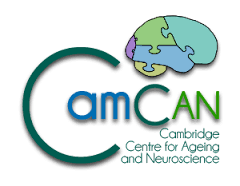CBSU bibliography search
To request a reprint of a CBSU publication, please
click here to send us an email (reprints may not be available for all publications)
Encoding Strategies Increase Prefrontal Activation but Reduce Verbal Working Memory Demand.
Authors:
Bor, D. & Owen, A.M.
Reference:
Neuroimage (2003) vol. 19, no. 2
Poster - Human Brain Mapping 2003 - June 2003
Year of publication:
2003
CBU number:
5612
Abstract:
It is often proposed that lateral prefrontal cortex (PFC) is important in organization and control of working memory contents [1]. In some cases, effective reorganization can decrease task difficulty [2], implying a dissociation between PFC activity and basic memory demand. Previous research using a visuo-spatial working memory task investigated the improvement of performance that occurs when materials can be recoded into higher level groups or chunks [3]. Structured sequences of locations, encouraging reorganization and chunking, were compared with unstructured sequences. Though structured sequences were easier to remember, event-related fMRI showed increased activation of lateral PFC for these sequences, in particular during memory encoding. Although further behavioural evidence supported the claim that this dissociation between PFC activity and working memory demand was due to chunking the structured sequences, it was unclear whether this result was specific to the visuo-spatial domain. The current study attempts to extend this novel result by using auditory-verbal material and a different form of structure to be chunked.

 MRC Cognition and Brain Sciences Unit
MRC Cognition and Brain Sciences Unit

